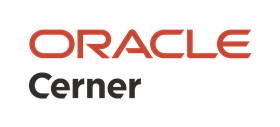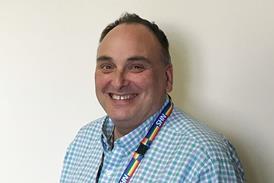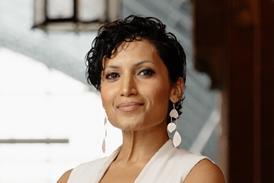A recent HSJ webinar, run in association with Oracle Cerner, considered how data might valuably play a part in addressing long-standing inequities. Claire Read reports.

Owen Chinembiri says it’s clear where the NHS needs to begin in tackling health inequalities. “Data has to be the starting point,” says Mr Chinembiri, senior implementation lead digital health and data at the NHS-England supported and NHS Confederation-hosted NHS Race and Health Observatory.
In association with
“Data helps us to identify where inequalities exist, it tells us about the magnitude of those inequalities, and it also tells about the trends – are they getting better, are they getting worse, are they about the same?”
The challenge that follows, then: how best to collect and then analyse that data. It was the question at the centre of a recent HSJ webinar. Run in association with Oracle Cerner, the event brought together a small panel – including Mr Chinembiri – to discuss how integrated care systems might most effectively harness data to combat health inequalities.
For Sarah Dougan, it’s a question which has been front and centre for some time. Until recently the director of population health intelligence at North Central London integrated care board – and now an independent consultant in population health and inequalities – she suggested collating different sources of information is crucial.
“There is intersectionality between deprivation, ethnicity and age. I think it’s really important that ICBs and ICSs understand the communities that they have.”
“ICSs and integrated care boards need to be working together to end up with joined up data for direct care, for planning and for research,” she argued. “I think the ICSs that end up being able to tackle health inequalities, which has been an entrenched issue for decades, if not centuries, will be the ones that manage to build a system where they are systematically monitoring and using the data for all three of those things.”
She suggested this should include qualitative as well as quantitative data, and be information which enables leaders “to understand local communities by multiple equalities dimensions”.
“There is intersectionality between deprivation, ethnicity and age. I think it’s really important that ICBs and ICSs understand the communities that they have.”
For organisations, that may involve building on work which accelerated during the early waves of the pandemic and – specifically – during efforts to ensure equal uptake of vaccination. In Lewisham, for instance, a population health digital platform supported targeted work on this agenda.
“It brings together near real time patient data from community, primary care, secondary care and our mental health providers, so it’s a really rich population database that we have,” explained Elizabeth Aitken, medical director of Lewisham and Greenwich Trust.
“And we have used it as a system. The clinical commissioning group in particular used it to target the areas that weren’t taking up the covid vaccination, so we could look at the population areas, look at who wasn’t having the vaccine, and then teams went out into the community [to help increase uptake].”
Up in the north west of England, similar work identified the need for additional support for those with learning disabilities. “We saw from the data that patients with learning disabilities were six times more likely to have a significant clinical outcome from flu and covid,” explained Paula Cowan, regional medical director for primary care for NHSE and a practising GP.
Using data wisely
“So we set up specific clinics targeted to our population with learning disabilities, because [these] patients are often fearful of big centres for vaccination, are fearful of not knowing the clinicians they are going to see.
“But we also used those specialist clinics to support health promotion – to promote screening, including for carers who came with them to administer their covid vaccination.
“So from that baseline data we could really look at how can we use this opportunity to target our interventions – not only in terms of covid vaccination, but looking a little bit wider.”
That idea of looking wider was reinforced by Andrew Moran, population health strategy executive at Oracle Cerner. The organisation, he says, “can provide the infrastructure for the data to live and for the intelligence to be found, but interventions need to be driven locally and tailored for the people that live there”.
In an ideal world, he said, that would mean gathering data from across a local health and care economy to then unite in a population health dashboard. “[It’s thinking] do care homes have electronic patient records? Could they be added? Could we add hospice data in so people can have a good death and avoid hospitalisation? Dentists identify more head and neck cancers than anybody else, how can we link those into the systems? And then thinking about how you leave the sphere of health as well, to the wider determinants [of health].”
“It’s so important that we look at this with a collective responsibility,” agreed Dr Cowan. “It isn’t one person’s job to address health and care inequalities; it isn’t one group’s job to address health and care and inequalities. This is a collective responsibility.
“And how can integrated care systems do that? Well, the key to that is the word integration – integrating health and care, and bridging that gap between that we’ve previously seen between health and care. Bringing into that mix our patient representation groups, our community, voluntary and faith sectors, our libraries, our education centres – how we can all work collectively to address health and care inequalities.”
An on demand version of this webinar is available.
If you had previously registered as a viewer for the event, click here or check your email for the link to the recording.
If you hadn’t previously registered, complete the form at https://www.hsj.co.uk/hsj-webinar-discussed-how-icss-can-effectively-use-data-to-combat-health-inequalities/7032884.article. You will then be sent details on how to access the recording.


























